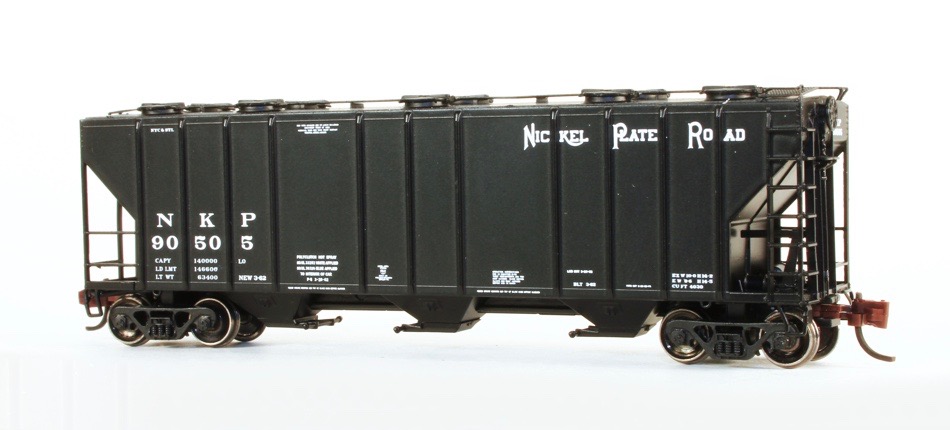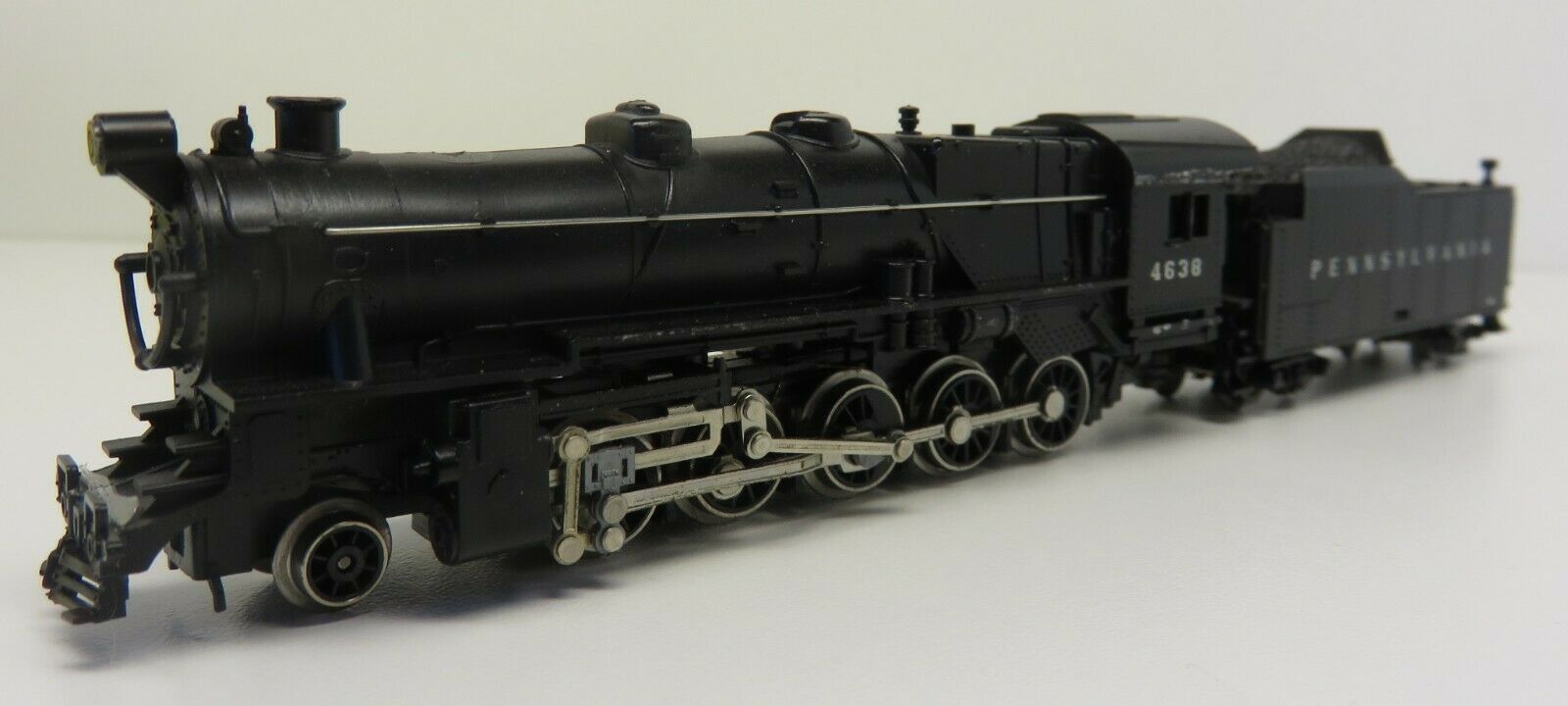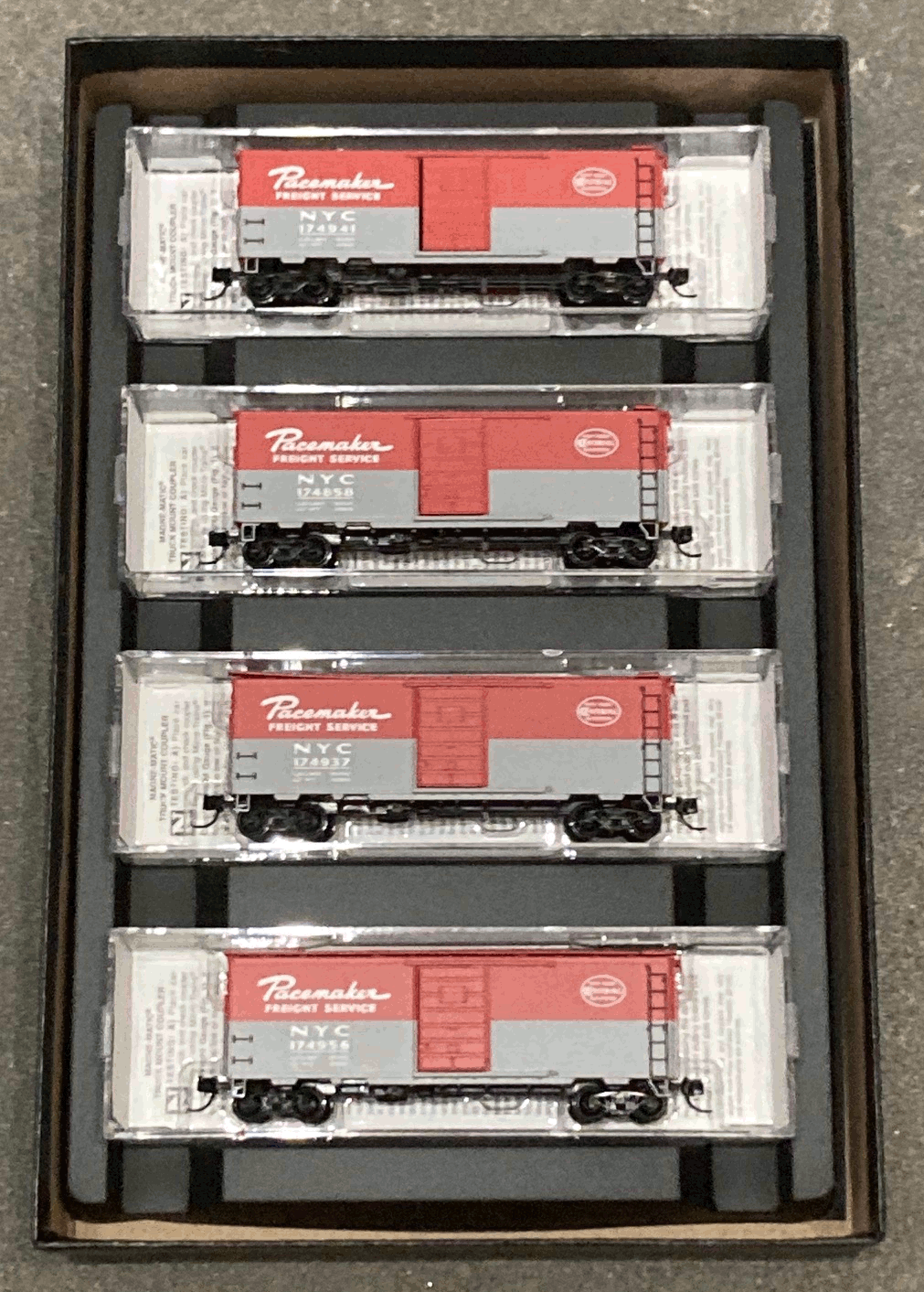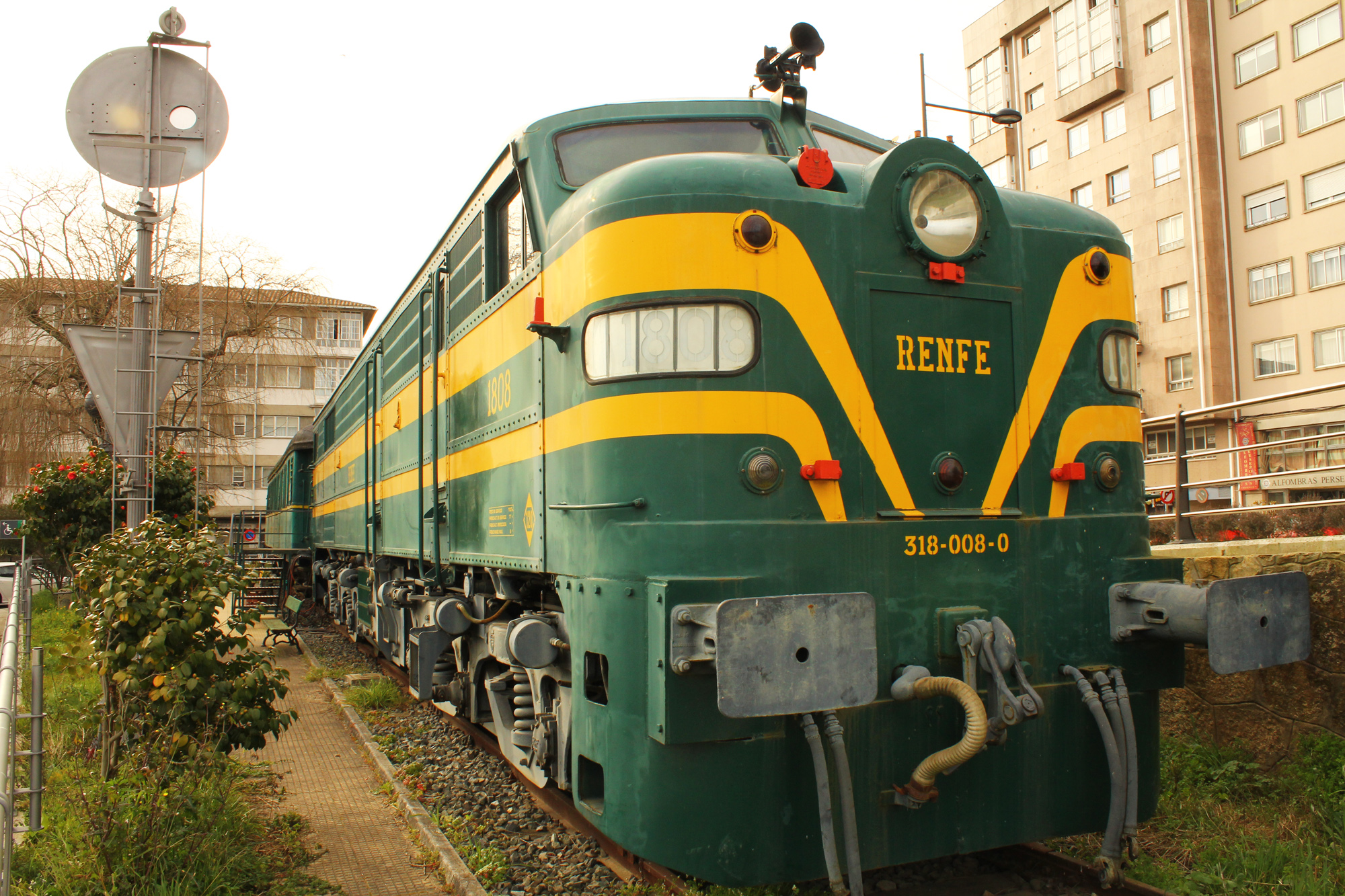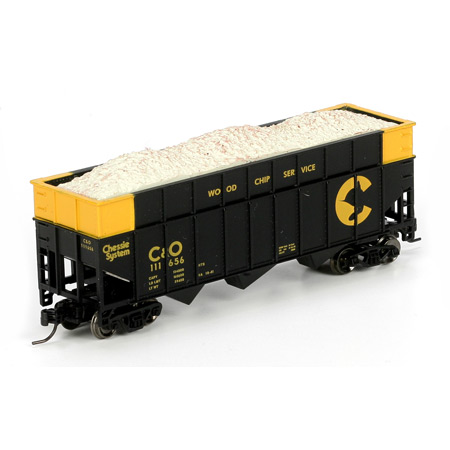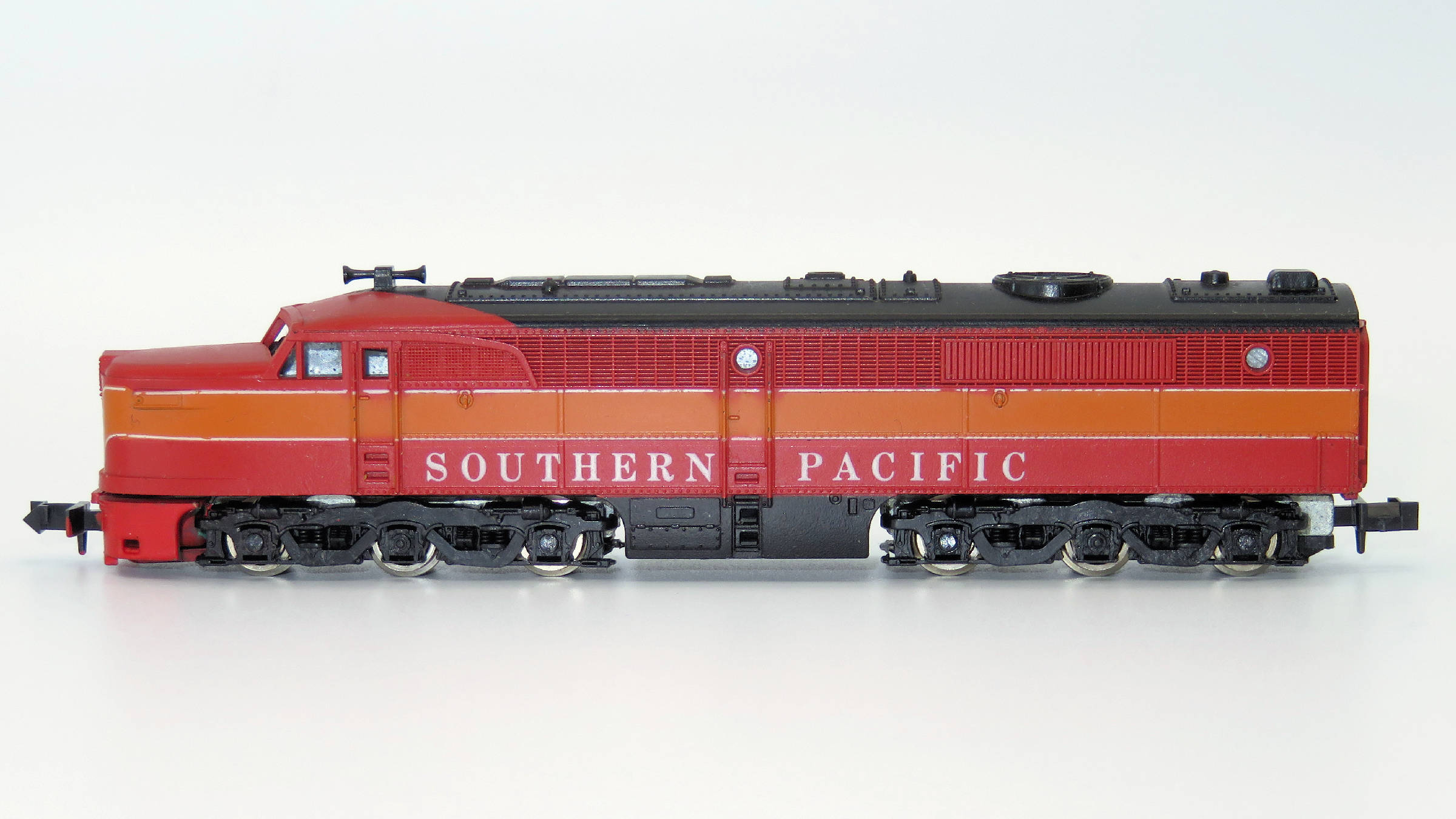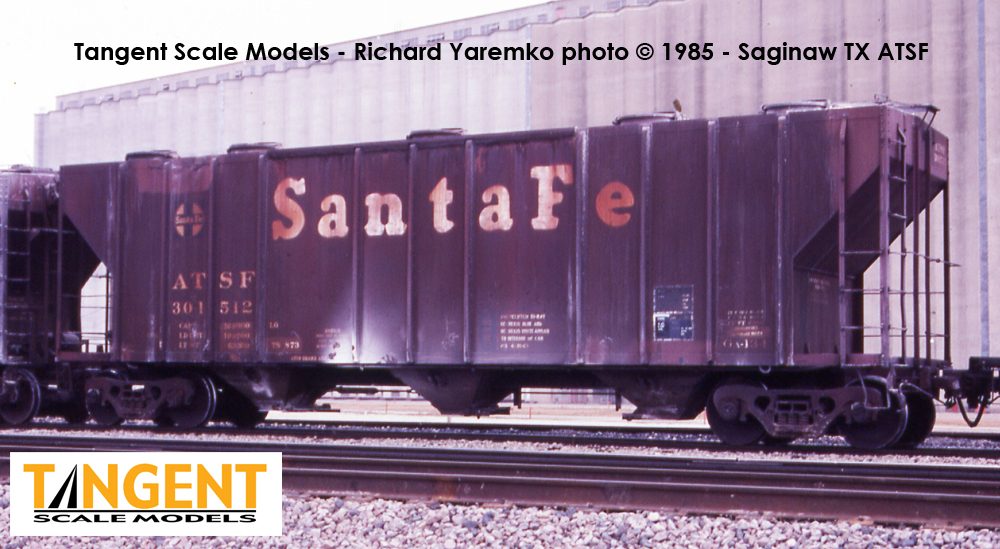Model Information: BLMA first released this model in October of 2009. This was the first appearance of this prototype in N Scale. This model is an excellent example of the company's willingness to push the boundaries of N Scale rolling stock. The brake detail, metal roofwalk and body-mount couplers along with the metal wheels helped set a new standard for N Scale when this model came out. The early BLMA releases feature MTL body-mount couplers whereas the Atlas releases use Accumate couplers. See a video of this model here on YouTube.
Features: Injection-molded plastic body; Fine-scale detail; Checmically etched roof walk and brake platform; Prototypical ride height; Accurately painted and printed; BLMA 100-ton trucks; BLMA 36" metal wheels; Brown knuckle couplers (MTL or Accumate - depending on Brand).
Features: Injection-molded plastic body; Fine-scale detail; Checmically etched roof walk and brake platform; Prototypical ride height; Accurately painted and printed; BLMA 100-ton trucks; BLMA 36" metal wheels; Brown knuckle couplers (MTL or Accumate - depending on Brand).
Prototype History: The PS-2CD 4000 cubic foot covered hopper was produced by Pullman-Standard between 1962 and 1964 in the company’s Butler PA shops. These cars led a very long service life, with some remaining in revenue service throughout the US, Canada, and Mexico until the early 2000s. One of the most distinctive Pullman covered hoppers, this common 90/100-ton car was mostly used in grain, malt, fertilizer, and similar bulk services. Here is a Pullman builder photo of a B&O PS4000.
These cars were built during a transitional period for covered hopper design. It was a time when customers were regularly using 40-foot boxcars for bulk commodity movements, and the inefficiencies of hand-loading and unloading boxcars were becoming issues for customers and railroads alike. Customers wanted faster loading and unloading processes, and railroads wanted the cars back sooner. The PS4000 was one of the first successful bulk commodity designs. The most common production version of these cars featured distinctive round hatches on the roof of the car.
These cars were built during a transitional period for covered hopper design. It was a time when customers were regularly using 40-foot boxcars for bulk commodity movements, and the inefficiencies of hand-loading and unloading boxcars were becoming issues for customers and railroads alike. Customers wanted faster loading and unloading processes, and railroads wanted the cars back sooner. The PS4000 was one of the first successful bulk commodity designs. The most common production version of these cars featured distinctive round hatches on the roof of the car.
Road Name History: 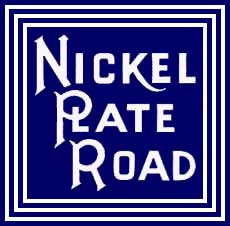 The New York, Chicago and St. Louis Railroad (reporting mark NKP), abbreviated NYC&St.L, was a railroad that operated in the mid-central United States. Commonly referred to as the Nickel Plate Road, the railroad served a large area, including trackage in the states of New York, Pennsylvania, Ohio, Indiana, Illinois and Missouri. Its primary connections included Buffalo, Chicago, Cincinnati, Cleveland, Indianapolis, St. Louis, and Toledo.
The New York, Chicago and St. Louis Railroad (reporting mark NKP), abbreviated NYC&St.L, was a railroad that operated in the mid-central United States. Commonly referred to as the Nickel Plate Road, the railroad served a large area, including trackage in the states of New York, Pennsylvania, Ohio, Indiana, Illinois and Missouri. Its primary connections included Buffalo, Chicago, Cincinnati, Cleveland, Indianapolis, St. Louis, and Toledo.
The Nickel Plate Railroad was constructed in 1881 along the South Shore of the Great Lakes connecting Buffalo and Chicago to compete with the Lake Shore and Michigan Southern Railway. In 1964 the Nickel Plate Road and several other mid-western carriers were merged into the larger Norfolk and Western Railway (N&W). The goal of the N&W expansion was to form a more competitive and successful system serving 14 states and the Canadian province of Ontario on more than 7,000 miles (11,000 km) of railroad. The profitable N&W was itself combined with the Southern Railway, another profitable carrier, to form Norfolk Southern Corporation (NS) in 1982.
At the end of 1960 NKP operated 2,170 miles (3,490 km) of road on 4,009 miles (6,452 km) of track, not including the 25 miles (40 km) of Lorain & West Virginia. That year it reported 9758 million net ton-miles of revenue freight and 41 million passenger-miles.
The Nickel Plate Historical and Technical Society works to preserve the memory of the Nickel Plate Road.
From WIkipedia

The Nickel Plate Railroad was constructed in 1881 along the South Shore of the Great Lakes connecting Buffalo and Chicago to compete with the Lake Shore and Michigan Southern Railway. In 1964 the Nickel Plate Road and several other mid-western carriers were merged into the larger Norfolk and Western Railway (N&W). The goal of the N&W expansion was to form a more competitive and successful system serving 14 states and the Canadian province of Ontario on more than 7,000 miles (11,000 km) of railroad. The profitable N&W was itself combined with the Southern Railway, another profitable carrier, to form Norfolk Southern Corporation (NS) in 1982.
At the end of 1960 NKP operated 2,170 miles (3,490 km) of road on 4,009 miles (6,452 km) of track, not including the 25 miles (40 km) of Lorain & West Virginia. That year it reported 9758 million net ton-miles of revenue freight and 41 million passenger-miles.
The Nickel Plate Historical and Technical Society works to preserve the memory of the Nickel Plate Road.
From WIkipedia
Brand/Importer Information: BLMA Models was founded in July of 2000 to bring Z, N, and HO Scale products of superior quality and originality to the model train community. At BLMA Models, we understand that quality and accuracy count in producing realistic scale models. Our passion revolves around accuracy, diversity, innovation and satisfaction to prototype model railroaders by providing exceptional products and service that goes beyond your expectations.
BLMA was acquired by Atlas Model Railroad in January of 2016.
BLMA was acquired by Atlas Model Railroad in January of 2016.
Item created by: CNW400 on 2021-02-09 15:42:58
If you see errors or missing data in this entry, please feel free to log in and edit it. Anyone with a Gmail account can log in instantly.
If you see errors or missing data in this entry, please feel free to log in and edit it. Anyone with a Gmail account can log in instantly.


